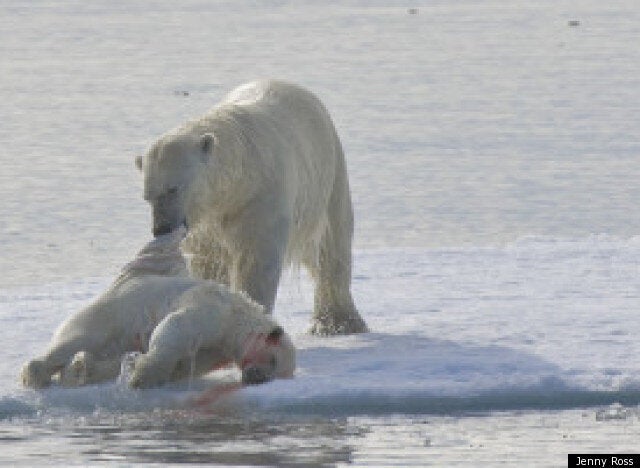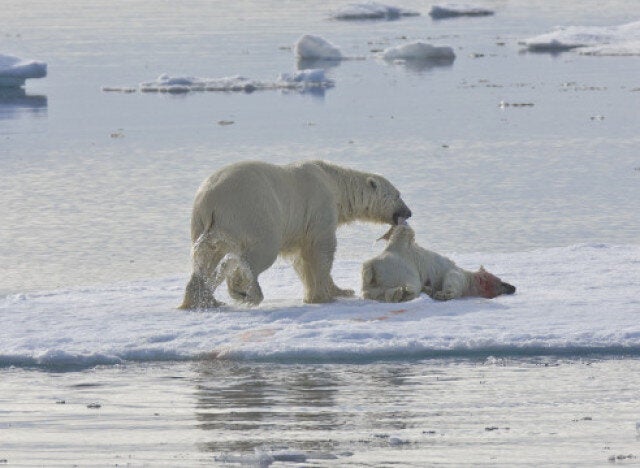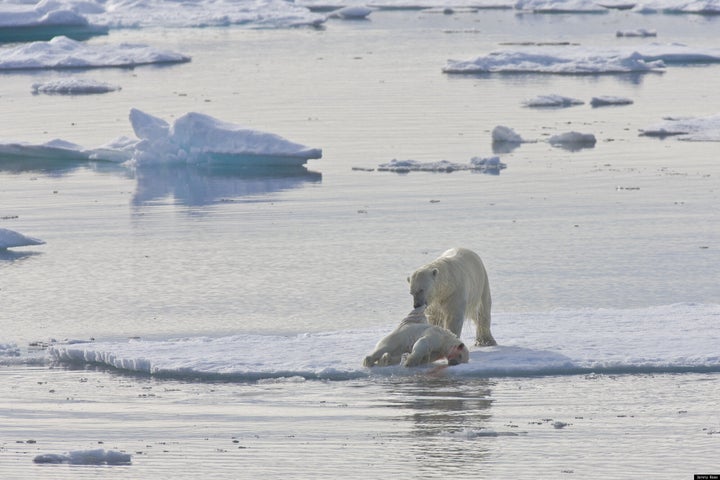Cannibal polar bears have left many open mouthed after a slaughterous beast was caught on camera with the bloody carcass of a polar cub swinging from its jaws.
A cannibal polar bear dragging the body of its own kind across the Arctic Tundra was caught by environmental photojournalist Jenny Ross in the northernmost part of Norway.
Polar bears will usually eat seals, but when hungry, the mammals will feast on larger animals, becoming vicious cannibal polar bears if necessary.

Jenny Ross said the cannibal polar bear had killed the bear in the same way as it usually kills a seal, through repeated savage bites to the head.
The polar cub’s blood glints orange in the Arctic light, as the cannibal polar bear carries the cub in its black jaws, sloping off to feast on his brutal snack later.
Watching Ross approach on the boat, the cannibal polar bear reportedly stood aggressively over his predatory prize, "asserting control over it and conveying 'this is my food'."

Speaking of her encounter with the cannibal polar bear, she told BBC News. "This type of intraspecific predation has always occurred to some extent,"
"However, there are increasing numbers of observations of it occurring, particularly on land where polar bears are trapped ashore, completely food-deprived for extended periods of time due to the loss of sea ice as a result of climate change."
Her assertion at the American Geophysical Union (AGU) meeting that cannibal polar bears are eating each other because of climate change has provoked outrage among some. It comes in the wake of the final episode of BBC Document Frozen Planet which focusses on climate change.
The Telegraph blog piece headlined its article with "The BBC: less trustworthy, more dangerous than a cannibal polar bear"pointing to an article by Christopher Booker "The BBC and Climate Change: A Triple Betrayal." It asserts that BBC’s responsibility towards accuracy and impartiality has been betrayed by its coverage of climate change.

However the shocking pictures taken by boat in Olgastretet, a stretch of water in the Svalbard archipelago, have traditionally been covered with ice year round. Now large straits are covered in water.
Polar bears usually use the ice as a platform on which to hunt seals, and now polar bears have gone looking for alternative sources of food, says Ross.
"On land, they're looking for human garbage and human foods; they're starting to prey on seabirds and their eggs”
"None of those alternative foods can support them, but they are seeking them out.
"Predating another bear is a way to get food; it's probably a relatively easy way for a big adult male. And it seems that because of the circumstances of the loss of sea ice - that kind of behaviour may be becoming more common."
